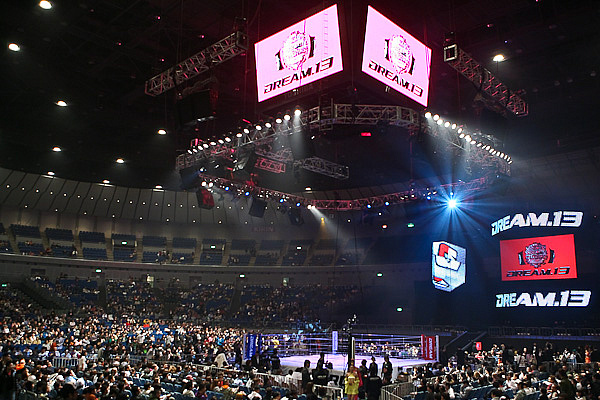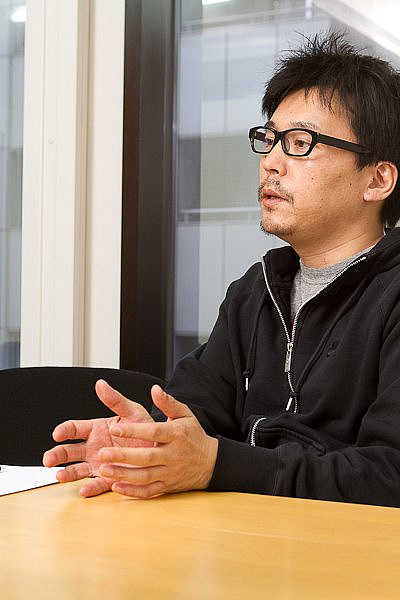Dream’s Fight for Japan, for Survival
Fighting for Japan
Tony Loiseleur May 21, 2011

Dream's Keiichi Sasahara has drawn on the lessons of postwar
Japan. | Daniel Herbertson/Sherdog.com
While many are only now marveling at how calmly the Japanese have accepted and responded to the Great Tohoku Earthquake, this stalwart resilience and perseverance is nothing particularly new for Japan. The immediate aftereffects of World War II left Japan both demoralized and in economic shambles, but within a few decades, the island nation successfully traded in its military empire for a potent economic and technological one.
One inspirational sporting icon who held a particular position of reverence in the revitalization of postwar Japan was professional wrestler Mitsuhiro Momota, better known as Rikidozan. Though ethnically Korean, Rikidozan served as Japan’s avatar of strength and moral discipline in the ring. Thanks to professional wrestling’s special form of physical theater, Rikidozan showed local audiences that his inherent Japanese spirit would always see him victorious, even against the likes of larger and stronger Western wrestlers. Rikidozan’s victories were thus sources of immense inspiration for Japan in a time when the country needed national heroes.
Advertisement

T.
Irei
Sasahara follows Rikidozan's example.
“We feel very much that we have a responsibility to that legacy,” Sasahara says with a hearty laugh. “I think that legacy is our main motivation. We have to keep that history going.”
“We wanted to show fans something that says ‘Japanese kakutogi
still has power.’ In planning it, we’ve been thinking ‘now is the
exact time an event like this is necessary,’” he adds. “We have a
long history of martial arts [and professional wrestling] in which
the likes of Rikidozan, Giant Baba and Tiger Mask have all had
roles in inspiring people, giving them courage. After World War II,
Rikidozan helped inspire the Japanese to rebuild the nation. If we
can give people that same kind of light and hope, wouldn’t
that be something special?”
As Rikidozan is credited with starting Japan’s love affair with professional wrestling, as well as encouraging a nation to believe in its own ethnic strengths, his example is naturally a daunting one to live up to. The pressure of following Rikidozan's legacy presents is something Sasahara optimistically calls a “privilege that only a few have had the honor of receiving.”
Given the immediacy of the March 11 disasters, Dream’s “Japan GP 2011” almost did not happen -- due to the uncertainty of whether it would be logistically possible in a post-disaster Japan and due to concerns over propriety. Even with these concerns in mind, however, Real and FEG eventually decided the potential benefits of staging the event outweighed the benefits of doing nothing.
“The main thing we’ve been considering is how we can help the survivors of the earthquake and tsunami. The people of Tohoku are still suffering, so from that perspective, we were thinking it may not be appropriate to be planning a kakutogi event, even if we were to do it on a very modest scale,” he admits.
Given Dream’s typically flashy, over-the-top production, the energy costs of staging an event are understandably steep, even in the best of times. As much of the Kanto and Tohoku regions are engaged in indefinite energy conservation campaigns, Sasahara assures that Dream’s May 29 event will be similarly bare-bones. Coincidentally, these concessions tie directly into charity plans for the event.
“We’re doing things like charity auctions and, of course, donating a percentage of revenue to charity. We haven’t decided how much just yet, but it will all be going to the [United Nations Human Settlements] program,” says Sasahara. “But, besides what we can save in our budget, a percentage of what we raise will be given the UN program. This event will be conducted with maximum effort toward energy conservation, trying to save energy costs. ”
Naturally, some critics may note a conflict of interest here, considering FEG and Real's acknowledged outstanding debts. Anticipating this, Sasahara requests patience and understanding.
“Some people will probably say, ‘If you’re going to do a charity event like this, why can’t you afford to pay all your fighters?’ And while we see their point, charity is still charity. This is what needs to be done at the moment. The financial matters will be resolved, but in time,” he explains.
Though the sentiments behind this next event are commendable and heartfelt, the question of whether or not the fight community will be able to fully trust in Dream and K-1 again remains. However, for show-runners like Sasahara, promoting is not only all he knows or loves but all he can do, given the circumstances.
The Japan GP is FEG and Real Entertainment’s otherwise unexpected first event for 2011; it is a testament to the spirit of Japanese perseverance that has found such admiration and a symbol that in Japan, life inexorably goes on.
Mizuka Koike and Taro Irei contributed to this report.
Related Articles







